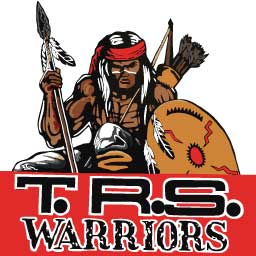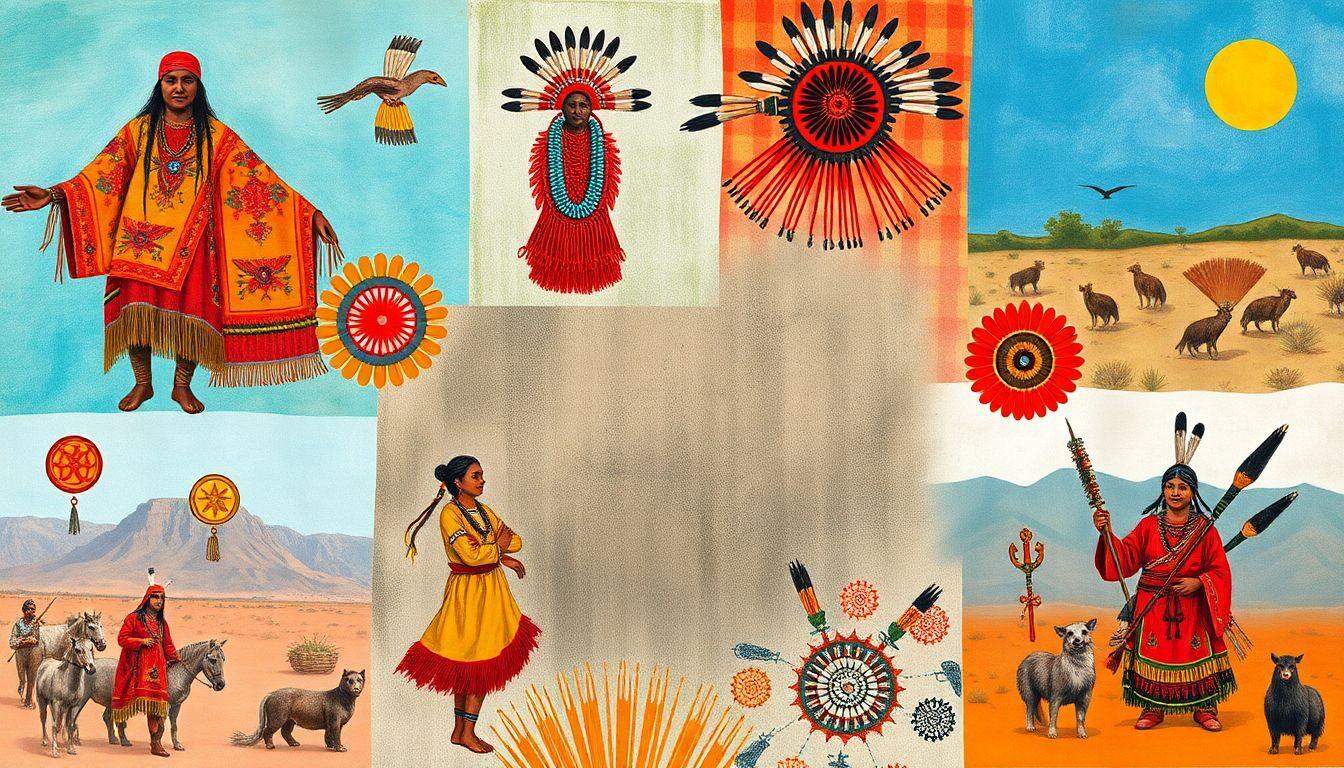The story of the Apache people is not merely a recount of the past; it is a testament to resilience, adaptation, and cultural richness that continues to thrive. Teaching Apache history and culture is essential not only for preserving this vibrant heritage but also for empowering future generations to appreciate the complexities of identity and survival. From the struggles of forced assimilation to the triumphs of cultural empowerment, the Apache narrative is a profound journey that deserves a prominent place in educational curricula.
Apache History
The Apache people, known for their fierce independence and adaptability, have a history that stretches long before European settlers arrived in North America. They are originally descendants of the Athabaskan-speaking tribes from the north, migrating to the American Southwest around 1,500 years ago. This migration is a fascinating chapter of resilience and adaptation, as they settled in diverse environments ranging from the plains to the deserts. The Apache tribes include the Chiricahua, Mescalero, Jicarilla, Lipan, and Western Apache, among others, each with its unique trajectory and interaction with colonial forces.
Their history is marked by strategic warfare against Spanish, Mexican, and American forces. The Apache’s guerrilla tactics were legendary, allowing them to resist for far longer than most Indigenous tribes. Figures like Geronimo and Cochise symbolize this resistance. Geronimo’s name alone conjures images of relentless defiance against impossible odds. However, the eventual forced relocations, including the infamous Long Walk to Bosque Redondo, represent dark periods of suffering and loss.
Insider Tip: According to Dr. David G. Anderson, an anthropologist specializing in Native American history, studying the Apache’s strategic resistance can provide insights into modern guerrilla warfare tactics.
Read more about historical contexts here.
Apache Culture
Apache culture is a vibrant tapestry woven with traditions, stories, and social customs that continue to evolve. At the heart of Apache culture is the emphasis on community and kinship. Their social structure is matrilineal, meaning lineage is traced through the mother’s line, which significantly impacts their social dynamics and inheritance laws.
Ceremonies play a crucial role in Apache culture, serving as rites of passage, spiritual celebrations, and community gatherings. The Sunrise Dance, for instance, is a puberty ceremony for young Apache women, symbolizing their transition into womanhood. This intricate, four-day ceremony involves dance, song, and teachings, encapsulating the Apache’s deep connection to their spiritual beliefs and community values.
Despite the harsh impacts of assimilation policies, the Apache have preserved these cultural elements. Teaching them in schools today is an act of cultural preservation and empowerment, countering centuries of cultural erasure.
Apache Language
Language is a critical component of cultural identity, and for the Apache, this is no different. The Apache languages, part of the Southern Athabaskan language family, include several dialects spoken by different Apache groups. The preservation of these languages has been challenging due to historical suppression and the dominance of English.
Efforts to revitalize Apache languages are gaining momentum, with language programs and resources being developed to teach younger generations. The Apache language is rich with nuances, reflecting the Apache worldview and intricate knowledge of their environment. For example, there are numerous terms related to the natural landscape, showcasing their deep connection to the land.
Insider Tip: Language revitalization expert Dr. Lucille Watahomigie emphasizes the importance of integrating Apache language instruction into mainstream education to ensure its survival.
Explore more about language integration here.
Apache Religion
The spiritual beliefs of the Apache are deeply intertwined with their daily lives and cultural practices. Apache religion is animistic, believing in the spiritual essence of all living and natural elements. They hold a profound respect for nature, considering it a source of knowledge and guidance.
Central to Apache spirituality is the concept of ‘Usen,’ a Creator deity, and a pantheon of spiritual beings who play roles in their myths and rituals. Ceremonial practices, such as the Gaan Dance, also known as the Mountain Spirit Dance, are conducted to honor these spiritual entities and seek their blessings for health, prosperity, and protection.
Understanding Apache religion is crucial for appreciating their worldview and moral values, which emphasize harmony with nature and community.
Apache Arts and Crafts
Apache arts and crafts are expressions of cultural identity, storytelling, and skill. They are renowned for their basketry, beadwork, and pottery, each piece reflecting a deep connection to their environment and heritage.
Basketry, for example, utilizes locally sourced materials like willow, devil’s claw, and yucca, woven into intricate designs and patterns. These baskets are not merely utilitarian; they are symbolic, each pattern telling a story or representing a cultural motif.
Beadwork is another significant art form, with designs often inspired by nature and mythology. The precision and creativity involved in Apache beadwork are testaments to their artistic heritage.
Insider Tip: Art historian Dr. Rebecca Tsosie suggests that incorporating Apache arts into educational programs can foster appreciation and understanding of cultural diversity.
Learn more about integrating arts into education here.
Apache Music and Dance
Music and dance are vital expressions of Apache culture, serving as a means of storytelling, spiritual expression, and social bonding. Apache music is characterized by distinctive rhythms and vocal styles, often accompanying dances that hold cultural or spiritual significance.
The Crown Dance is one such example, performed by men adorned with elaborate headdresses representing mountain spirits. This dance is not just a performance but a spiritual ritual, seeking to connect with the divine and bring blessings to the community.
Music education programs that include Apache music can provide students with a broader cultural perspective and an understanding of music’s role in cultural identity.
Apache Food
Traditional Apache cuisine reflects their adaptability to the diverse environments of the Southwest. Their diet historically included a variety of wild game, plants, and seeds, with hunting and foraging being essential survival skills.
Today, while modern influences are evident, there is a resurgence in traditional food practices, promoting health and cultural heritage. Dishes like acorn stew, frybread, and roasted agave hearts are being reintroduced, celebrating the flavors and sustainability of Apache culinary traditions.
Incorporating Apache food studies into educational curriculums can enhance cultural understanding and promote healthy eating habits.
Apache Clothing
Apache clothing is a blend of practicality and artistry, designed to suit the varied climates they inhabit. Traditional attire includes buckskin garments, decorated with intricate beadwork and fringes, each piece telling a story of its maker and wearer.
The transition to European-style clothing during the assimilation era represented a loss of cultural identity. However, there is a growing movement to revive traditional clothing styles as a form of cultural pride and resistance.
Understanding the significance of Apache clothing can offer insights into their cultural resilience and adaptation.
Apache Games and Sports
Games and sports have always been integral to Apache culture, serving as a means of physical fitness, entertainment, and socialization. Traditional games like the moccasin game, a guessing game involving strategy and luck, and the bow and arrow, which honed hunting skills, are still played today.
These activities are not just pastimes; they are educational tools that teach important life skills and values. Incorporating Apache games into school curriculums can enhance physical education programs and foster cultural appreciation.
Conclusion:
Teaching Apache history and culture is not just an academic exercise; it is a commitment to preserving a rich heritage and empowering future generations. By integrating Apache perspectives into education, we can foster a more inclusive and understanding society. This is not merely about looking back but about moving forward with respect and acknowledgment of the past. By embracing the Apache narrative, we contribute to a broader understanding of history and culture, one that values diversity and resilience.
FAQ
Question: Who can benefit from learning Apache history and culture?
Answer: Students, educators, and anyone interested in Native American heritage can benefit.
Question: What are the key topics in Apache history and culture education?
Answer: Key topics include assimilation, empowerment, traditions, and modern challenges.
Question: How can I teach Apache history effectively in my classroom?
Answer: Utilize diverse resources like books, documentaries, and guest speakers for engagement.
Question: Why is it important to address assimilation in Apache culture?
Answer: Understanding assimilation helps contextualize current empowerment efforts among Apache communities.
Question: What resources are available for teaching Apache history and culture?
Answer: Numerous online platforms, scholarly articles, and community organizations offer great resources.
Question: How can I overcome resistance to teaching sensitive cultural topics?
Answer: Emphasizing the importance of cultural understanding can help alleviate concerns.




